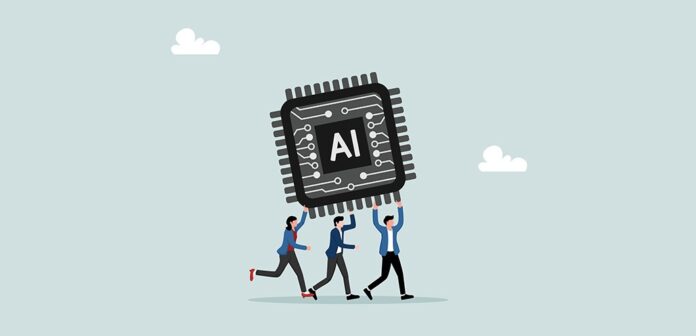AI is starting to demonstrate its usefulness
Artificial intelligence (AI) offers powerful tools to address the industry’s biggest challenges: heavy workloads that lead to burnout, the need for enhanced attendee experiences and the pressure to achieve more with fewer resources and less time.
In a recent webinar, JT Long, vice president and content director for Smart Meetings, hosted event experts to discuss the practical applications of AI for professional planners.
Maintain the Right Mindset
Author Gary A. Bolles, co-founder of parachutehealth.com and chair at Singularity University, is a globally recognized expert on the future of work and business change. Bolles explored how AI could revolutionize professional meeting planning. He suggested that integrating AI tools fosters a continuous “learning mindset,” enhances problem-solving and fuels creativity—key elements for success in today’s rapidly changing environment. He views AI as a “superpower,” helping planners create memorable experiences while optimizing efficiency.
Read More: How Event Planners Are Using AI in 2025
Bolle explained the “three legs of the stool”: mindset, skill set, and tool set, stressing that adopting an agile, lifelong learning attitude enabled planners to stay ahead of exponential change. His focus on skill development encompassed problem-solving, adaptability, creativity and empathy—summarized as the “PACE” model. These skills helped planners respond swiftly to challenges, innovate and connect emotionally with attendees. For example, problem-solving addressed last-minute venue changes, while AI-driven creativity generated unique event ideas rapidly. Bolle underscored empathy as “the human superpower,” essential for understanding attendee needs and crafting engaging, personalized experiences.
“If you give planners tools that could synthesize context and act in real time, their job shifted from firefighting to designing better experiences,” said Bolles.
Wearables as Wellness Monitors
Robin Farmanfarmaian, author of “How AI Can Democratize Healthcare,” demonstrated how AI-enabled health technologies could support meeting planners and attendees before, during, and after events by enabling on-the-spot wellness monitoring, remote diagnostics, and home-based care—reducing disruptions and preserving attendee performance.
Before events, wearable and phone-based tools (such as the Oura ring, cough-counting apps and transdermal optical imaging) could detect early illness, track vital signs and flag risks, allowing planners or individuals to adjust schedules, hydration or travel plans to prevent the spread of illnesses.
During events, point-of-care devices like TytoCare enabled clinicians to remotely inspect ears, throats and lungs via live video with AI-assisted analysis. Smartphone camera apps could measure blood pressure, oxygen and even cholesterol or A1c in 30–60 seconds, allowing for rapid wellness checks on-site.
Sleep and movement monitoring (using home sleep kits and FDA-cleared smartwatch apps) provided clinical-grade tracking of sleep apnea and Parkinson’s movement, allowing remote clinicians to fine-tune care without requiring in-person clinic visits. After events, virtual physical-therapy platforms (e.g., Sword Health) use sensors and smartphone cameras to guide exercises, send progress updates to therapists, and accelerate recovery—helpful for managing post-event injuries or chronic pain.
Farmanfarmaian’s core message was that accessible AI health tools turned clinics into portable, scalable services that fit professionals’ “27‑hour days,” keeping attendees healthier and events more resilient. Quote: “You didn’t need to go to a hospital or clinic anymore to get a lot of things taken care of.” Overall, she positioned AI-driven diagnostics and telehealth as practical, deployable solutions to protect wellness, reduce absenteeism, and improve attendee experience across the event lifecycle.
Bespoke Planning Tools
Noah Cheyer, co-founder of Speak About AI, explored how bespoke AI tools could revolutionize professional event planning, emphasizing the importance of making AI tools practical and immediately applicable for busy event professionals.
He stated, “I really want to make sure that everything I share here is super hands-on. You can learn how to use this right now, and how it impacts the thousands of events you’re likely organizing.”
Cheyer showcased his custom event planning timeline generator built on ChatGPT, designed to streamline the complex task of scheduling and coordinating event details. By inputting basic event information—such as date, location, attendance, and requirements—users receive a detailed, automatically generated timeline outlining tasks from initial planning to post-event activities. (His full suite of AI tools are available for free.)
He demonstrated that this tool helps reduce manual spreadsheet work, like adjusting dates or reallocating responsibilities, saving busy professionals time and minimizing errors. He prefers voice functionality for quick data entry and explained how the tool adapts to last-minute changes, such as venue or speaker cancellations. Additionally, he emphasized the importance of data security, advising users not to share proprietary information. Cheyer also discussed exporting options like Excel and Gantt charts, noting that while some features could be refined, they serve as valuable starting points.
His overarching goal was to empower event planners with AI-driven solutions to improve efficiency, accuracy, and client communication throughout all stages—before, during, and after events—making the planning process more manageable and impactful.
